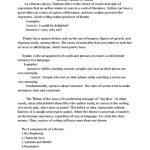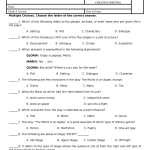Unleash Your Child’s Imagination With Creative Writing Year 4 Program – Enroll Now For A Journey Of Words
Creative Writing Year 4: Unlocking Imagination and Language Skills
Introduction
Dear Readers,
3 Picture Gallery: Unleash Your Child’s Imagination With Creative Writing Year 4 Program – Enroll Now For A Journey Of Words
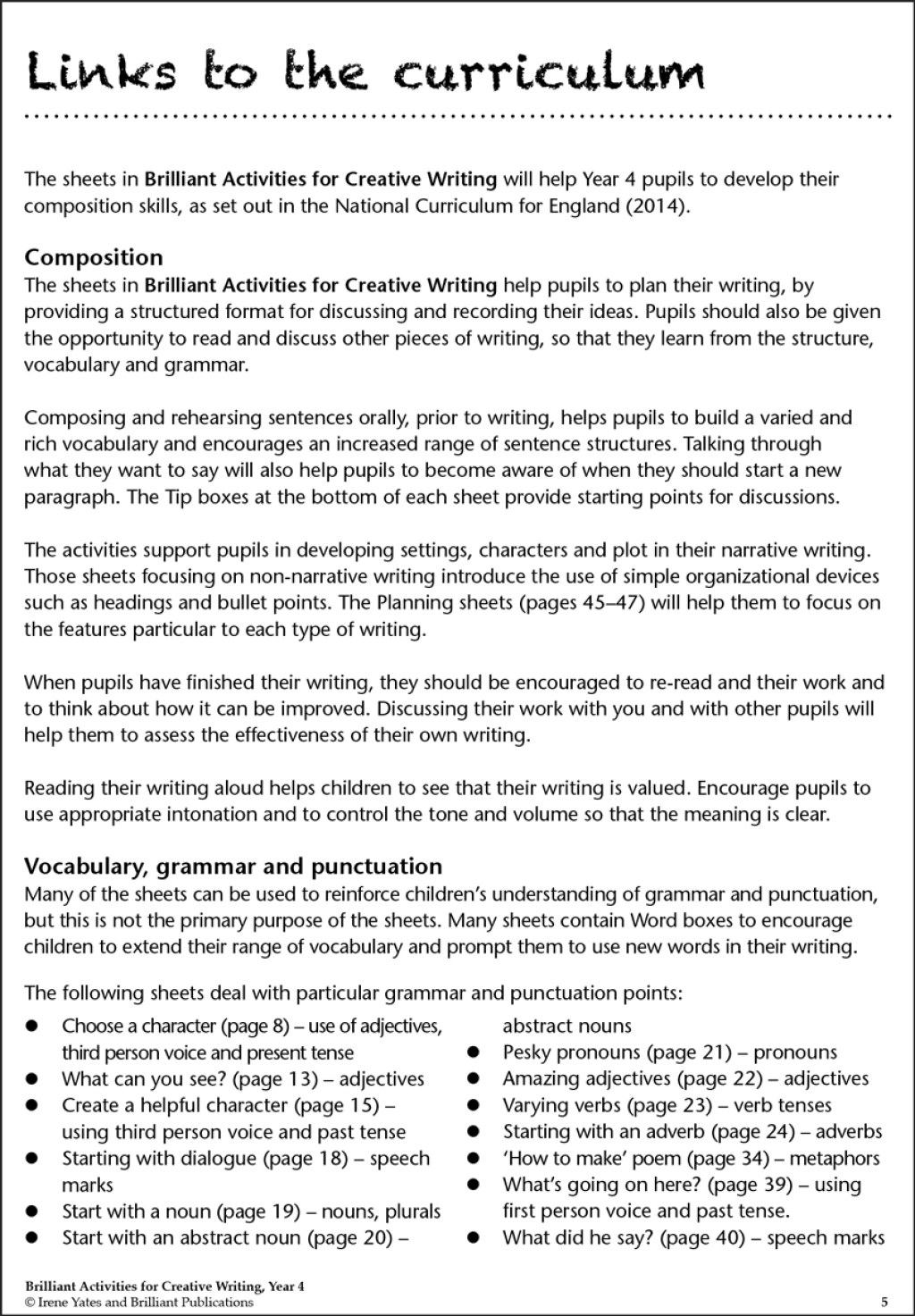
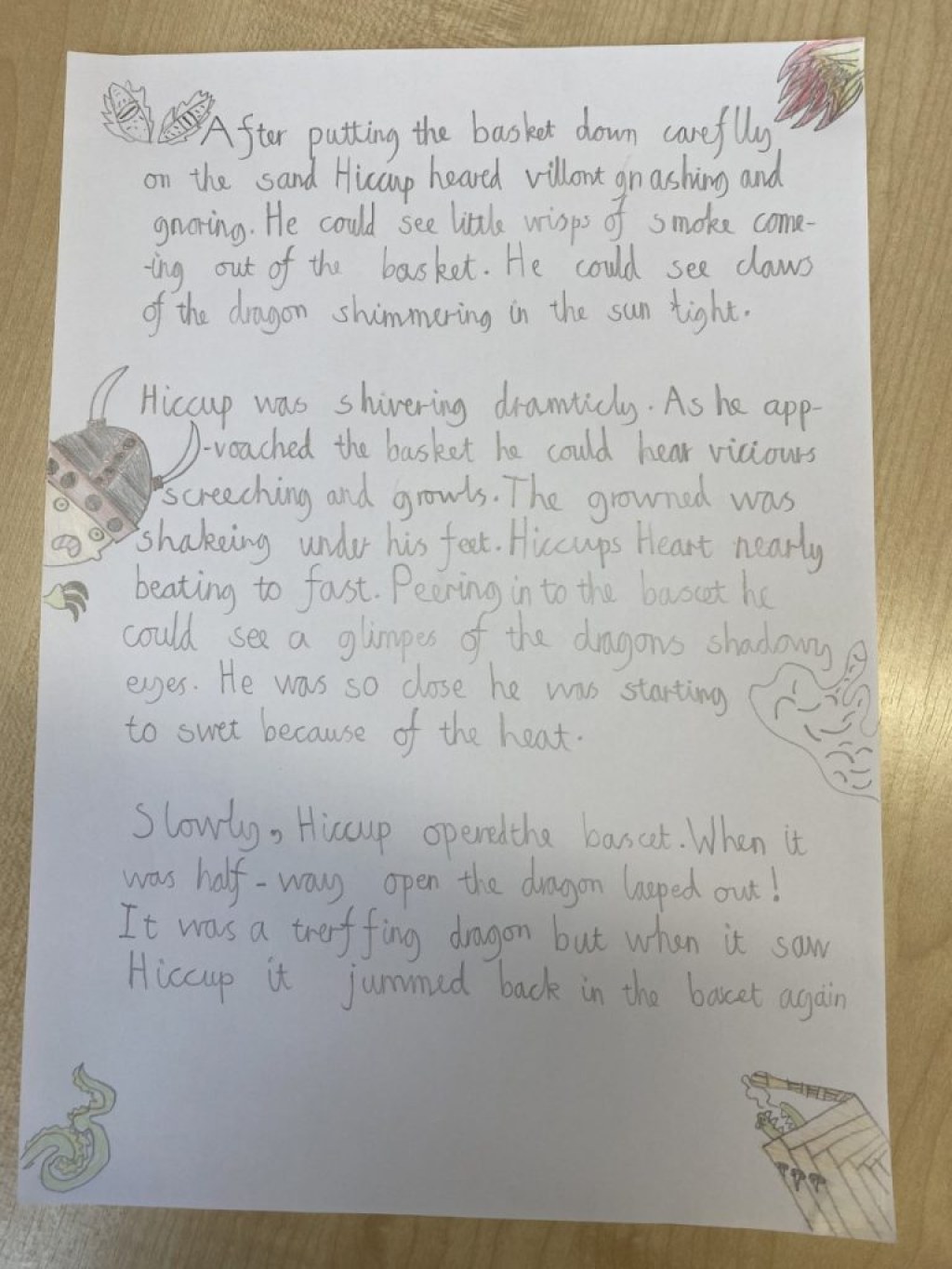
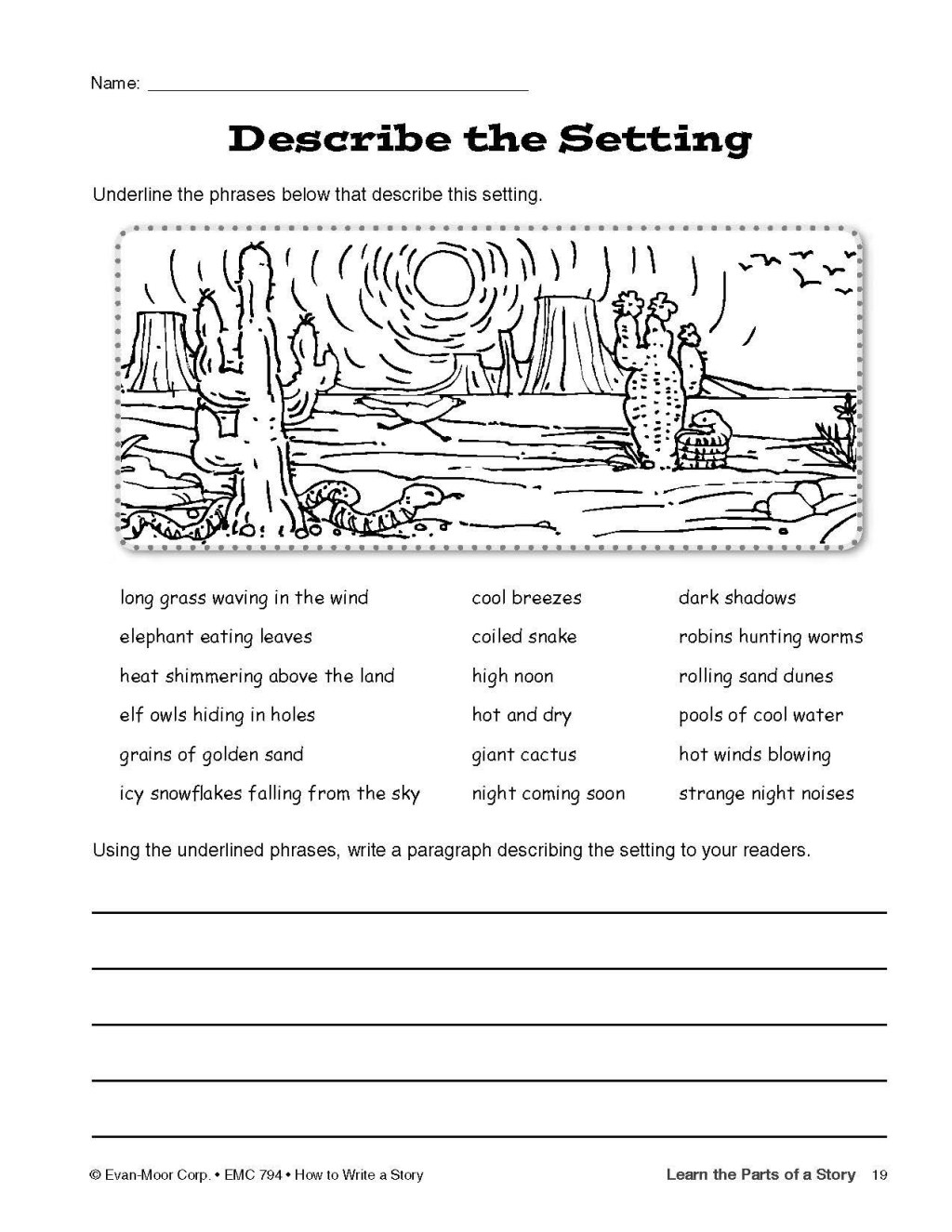
Welcome to our comprehensive guide on creative writing for Year 4 students. In this article, we will explore the fascinating world of creative writing and how it can enhance language skills, imagination, and self-expression in young learners. Creative writing allows students to think critically, express themselves, and develop a love for literature. Let’s dive into the exciting realm of Year 4 creative writing!
Table of Contents
Section
Page

Image Source: brilliantpublications.co.uk
What is Creative Writing Year 4?
1
Who Can Benefit from Creative Writing Year 4?
2
When to Introduce Creative Writing to Year 4 Students?
3
Where Can Creative Writing Take Place?
4
Why Is Creative Writing Important for Year 4 Students?
5

Image Source: avpblogs.net
How to Foster Creative Writing Skills in Year 4?
6
Advantages and Disadvantages of Creative Writing Year 4
7
Frequently Asked Questions
8
Conclusion
9
Final Remarks
10
What is Creative Writing Year 4? 💡

Image Source: anchoracademic.com
Creative Writing Year 4 is a program designed to foster imagination and language skills in students at the fourth-grade level. It encourages students to express themselves through various forms of writing, such as stories, poems, and personal narratives. By exploring different genres and styles, students develop a deeper understanding of language and storytelling.
Exploring Different Genres
Through creative writing, Year 4 students have the opportunity to explore different genres, including fiction, non-fiction, and poetry. This exposure to various genres helps students develop their writing skills, discover their preferences, and expand their literary knowledge.
Enhancing Language Skills
Creative writing allows Year 4 students to practice and enhance their language skills, including grammar, vocabulary, and sentence structure. By engaging in writing exercises and activities, students gain a better understanding of language conventions and how to effectively communicate their ideas.
Unleashing Imagination
In Year 4, children have vivid imaginations that can be nurtured through creative writing. This program encourages students to explore their creativity, imagine new worlds, and create compelling characters and plots. It fosters a love for storytelling and empowers students to share their unique perspectives.
Fostering Self-Expression
Creative writing provides Year 4 students with a platform to express themselves freely. It allows them to articulate their thoughts, emotions, and experiences in a creative and personal way. This self-expression promotes self-confidence, emotional intelligence, and empathy.
Developing Critical Thinking
Engaging in creative writing exercises challenges Year 4 students to think critically and problem-solve. It encourages them to analyze situations, develop logical narratives, and consider different perspectives. These critical thinking skills are valuable not only in writing but also in other academic subjects.
Building Appreciation for Literature
Creative writing exposes Year 4 students to the beauty of literature and storytelling. By studying different literary works and practicing their own writing, students develop a deeper appreciation for language, culture, and the power of words. It ignites a lifelong love for reading and writing.
Who Can Benefit from Creative Writing Year 4? 📚
Creative Writing Year 4 is beneficial for a wide range of students, including:
Students with Language Difficulties
For students who struggle with language skills, creative writing can provide a platform to practice and improve their abilities. It allows them to express themselves in a supportive and creative environment, enhancing both their writing and communication skills.
Advanced Learners
Year 4 students who excel in language arts can benefit from creative writing by honing their skills and pushing their boundaries. It challenges them to explore advanced writing techniques, experiment with different genres, and develop a unique writing voice.
Students Seeking Self-Expression
Many Year 4 students crave a space to express their thoughts and feelings. Creative writing provides an outlet for self-expression, allowing students to explore their identities, embrace their emotions, and communicate their experiences through the power of storytelling.
Children with Active Imaginations
Year 4 students who possess active imaginations are naturally drawn to creative writing. This program nurtures their creativity, encourages them to think outside the box, and supports the development of their imaginative ideas into coherent stories.
All Year 4 Students
Regardless of their abilities or interests, all Year 4 students can benefit from creative writing. It promotes overall language development, critical thinking skills, and personal growth. Creative writing provides an inclusive and engaging learning experience for every student in Year 4.
When to Introduce Creative Writing to Year 4 Students? ⏰
Introducing creative writing to Year 4 students can be done at any point during the school year. However, it is recommended to start early to allow ample time for skill development and progression. Here are some considerations:
Beginning of the School Year
Starting creative writing at the beginning of the school year sets a positive tone for the entire year. It establishes a routine, creates excitement, and allows students to develop foundational skills from the start.
After Establishing Basic Writing Skills
Before diving into creative writing, it is essential to ensure students have a solid foundation in basic writing skills. This includes understanding sentence structure, grammar, punctuation, and capitalization.
Throughout the Year
Creative writing should be integrated throughout the school year, allowing students to practice and develop their skills continuously. It can be incorporated into language arts lessons, independent writing time, or as part of a dedicated creative writing program.
Assessing Individual Readiness
Teachers should assess the readiness of individual students before introducing creative writing. Some students may require additional support or scaffolding to fully engage in the creative writing process.
Where Can Creative Writing Take Place? 🌍
Creative writing can take place in various settings to create a dynamic and engaging learning experience. Here are some ideal locations for creative writing:
Classroom
The classroom provides a structured and supportive environment for creative writing. Teachers can create a dedicated writing corner or area where students can comfortably engage in writing activities, brainstorm ideas, and share their work with peers.
Outdoor Spaces
Nature can inspire creativity and provide a change of scenery. Taking students outside to write in natural surroundings can stimulate their imagination and encourage them to observe and describe the world around them.
Library
Libraries are treasure troves of inspiration for young writers. Organizing a class visit to the library or inviting a librarian to introduce different genres and authors can spark students’ curiosity and broaden their literary horizons.
Virtual Platforms
Incorporating technology into creative writing can open up new possibilities. Virtual platforms, such as online writing communities, interactive writing tools, and virtual workshops, allow students to connect with other young writers and receive feedback on their work.
Why Is Creative Writing Important for Year 4 Students? 🎯
Creative writing holds immense value for Year 4 students, providing them with numerous benefits:
Improving Writing Skills
Engaging in creative writing activities enables Year 4 students to practice and refine their writing skills. Through regular writing practice, students become more confident and proficient in expressing their ideas effectively.
Enhancing Vocabulary
Creative writing exposes Year 4 students to a broad range of vocabulary. As they experiment with different genres and styles, they encounter new words, phrases, and expressions, expanding their vocabulary and enriching their writing.
Developing Critical Thinking
Creative writing challenges Year 4 students to think critically, analyze situations, and develop logical narratives. It encourages them to consider multiple perspectives, problem-solve, and make connections between different ideas.
Boosting Self-Confidence
By sharing their creative writing with peers and receiving feedback, Year 4 students develop a sense of accomplishment and pride in their work. This boosts their self-confidence and inspires them to continue exploring their writing abilities.
Cultivating Imagination
Creative writing nurtures the imaginative capacities of Year 4 students. It encourages them to think creatively, explore new ideas, and construct vivid worlds through words. This fosters their imagination and inspires a lifelong love for creativity and storytelling.
Fostering Empathy
Through creative writing, Year 4 students can step into the shoes of different characters and explore diverse perspectives. This fosters empathy, helping students develop a deeper understanding and appreciation for others.
Expression of Emotions
For Year 4 students, creative writing provides an outlet for expressing their emotions, thoughts, and experiences. It allows them to process their feelings and find solace in written words, promoting emotional well-being and self-awareness.
How to Foster Creative Writing Skills in Year 4? 🌟
To foster creative writing skills in Year 4 students, educators can implement the following strategies:
Provide Prompts and Inspiration
Give students a starting point for their writing by providing prompts, images, or objects that spark creativity. This encourages students to think outside the box and find unique angles for their stories.
Encourage Freewriting
Allocate time for freewriting exercises where students can write without worrying about grammar or structure. This allows their creativity to flow freely and helps generate ideas for future writing projects.
Offer Constructive Feedback
Provide constructive feedback on students’ writing, focusing on strengths and areas for improvement. Encourage peer feedback to promote collaboration and help students refine their writing skills.
Integrate Literature Analysis
Analyzing literary works during language arts lessons can inspire Year 4 students to experiment with different writing techniques and styles. Discussing the elements of storytelling and character development enhances their understanding of the creative writing process.
Create a Writing Portfolio
Encourage Year 4 students to maintain a writing portfolio where they can collect and showcase their best work. This allows them to track their progress and reflect on their growth as young writers.
Provide Authentic Audiences
Give students opportunities to share their creative writing with authentic audiences, such as publishing their work in a class anthology or performing readings in front of parents and peers. This motivates students and instills a sense of pride in their writing achievements.
Organize Writing Contests
Hold writing contests within the classroom or school community to inspire healthy competition and celebrate students’ creative abilities. This fosters a supportive writing culture and encourages students to push their boundaries.
Advantages and Disadvantages of Creative Writing Year 4 ✅❌
Advantages
1. Enhances Language Skills: Creative writing improves grammar, vocabulary, and sentence structure.
2. Promotes Self-Expression: Students can freely express their thoughts and emotions through writing.
3. Stimulates Imagination: Creative writing allows students to explore their creativity and build imaginative worlds.
4. Develops Critical Thinking: Engaging in writing exercises challenges students to think critically and problem-solve.
5. Fosters Love for Literature: Creative writing exposes students to the beauty of literature and storytelling, inspiring a lifelong love for reading.
Disadvantages
1. Time-Consuming: Creative writing activities may require additional time and resources.
2. Difficult for Some Students: Some students may find creative writing challenging due to language difficulties or lack of confidence.
This post topic: Creative Writing
